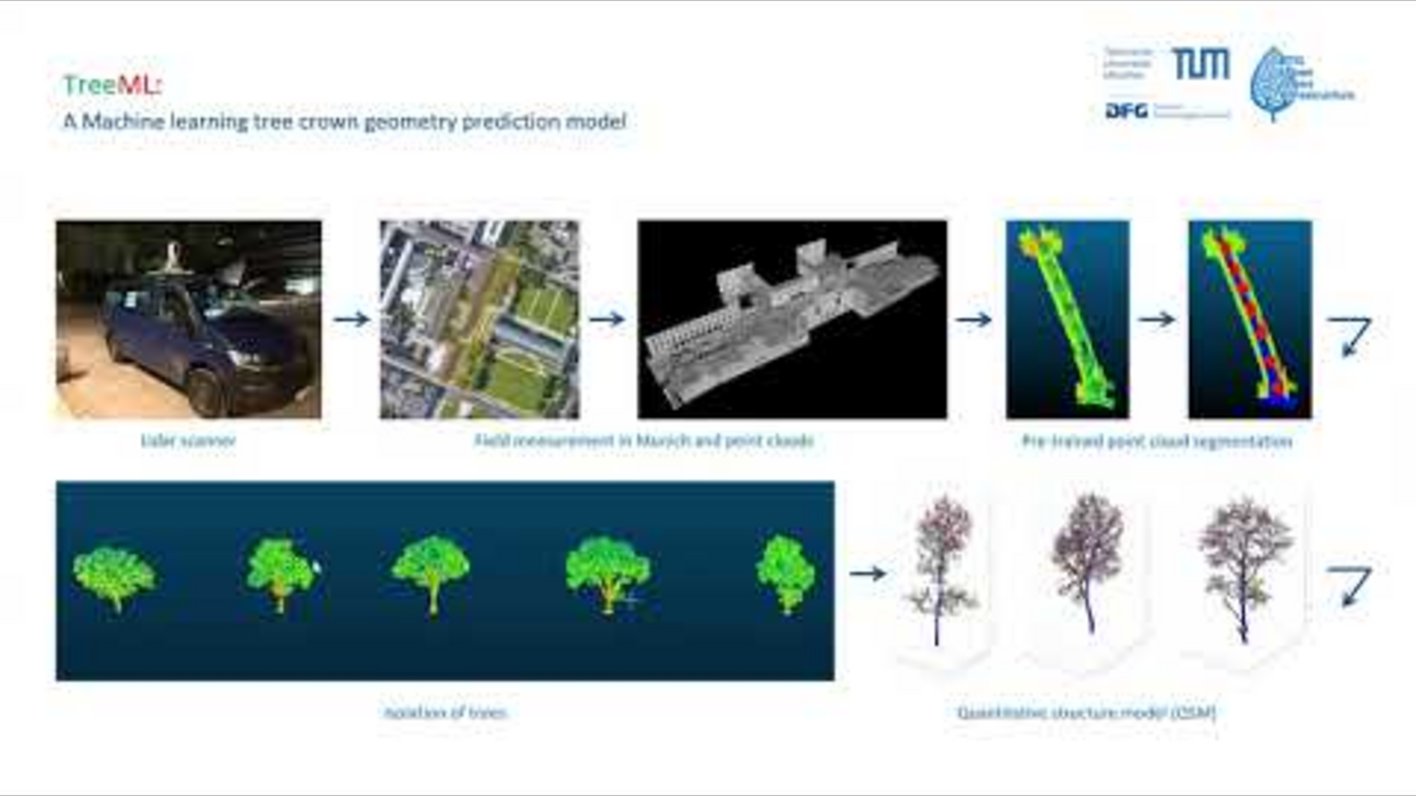Designing UGIs as dynamic processes
Research Training Group on Urban Green Infrastructure [RTG UGI]

Nowadays, planting strategies in urban areas often consider first mobility, buildings, and other urban infrastructure, next, trees are planted according to other components and land usages. Moreover, the growing process of trees to reach the final goal of the planting strategies is not adequately considered in these approaches. However, the tree growth and tree competition for growing in urban areas are affected by different factors such as microclimate which are not taken into account enough in previous studies. Furthermore, there is a lack of tree growth and planting models regarding the urban microclimate effects on trees such as the shadows of buildings, etc. Examining the microclimate factor in urban areas for finding a comprehensive prediction model of canopy volume growth could generate an iterative target-based planting design procedure for feeding designers and planners. This 3-year doctoral study has two main steps: 1. Microclimate-based tree growth model and 2. Target-driven planning model. After evaluating the CityTree model according to the microclimatic features, a target-based data-driven planting model will be developed. Finally, this model helps designers and urban planners with decision-making in planting design. The outcome is a design workflow for planting suggestions according to the target leaf area. The model has the opportunity to add more data from other climate zones and urban structures to increase the accuracy of the prediction stage and also use the workflow for different countries with various tree species. To complete the iterative design loop for achieving the target leaf area a complementary research project focuses on the management and manipulation of tree growth by means of pruning and bending branches.
This research objective proposes a novel approach for designing UGI from a 3D voxel point of view in cities and maximizing the leaf areas according to the limitations. It has the following objectives:
Step 1: Conceptual voxel model generation
O1: Target leaf area
This step proposes a conceptual novel approach for designing UGIs from a 3D voxel point of view in cities to maximize the leaf area considering existing spatial conditions and objectives. A 3D voxel model feeds the final tree planting design tool as an intended distribution of leaf areas or leaf densities in space. Figure 1 shows an overview of the project workflow that has the following objectives:
Step 2: Tree growth rate and abiotic environmental effects (Q1)
O2: Optimizing CityTree Model with microclimate data
Although there are several tree growth models for simulating the growth rate of trees in forest and urban areas, there is a lack of considering urban microclimate in tree growth models in cities. The objective of this step is to evaluate the impact of microclimate factors in tree growth models, such as the CityTree model.
O3: Pattern extraction of tree growth in cities
By considering the impact of microclimate factors on the tree growth rate, the important abiotic environmental factors can be extracted. The objective is to find a special pattern between adjacent buildings and surrounding trees' geometric features and tree growth rate changes from experimental and simulated data in O2. The growth rate changes will be predicted by machine learning (ML) models based on the impact of the adjacent building and tree geometric features.
Step 3: Tree planting design tool based on tree growth process (Q2)
O4: Tree canopy growth simulation based on adjacent objects
integrating A. ML-based growth rate changes model (O3) and B. tree growth competition between two trees into one simulation model.
O5: Planting suggestion
Developing a tree planting design tool based on the tree growth model in (O4). The model uses the 3D voxel model as a target leaf area for achieving the goal (ESS).
